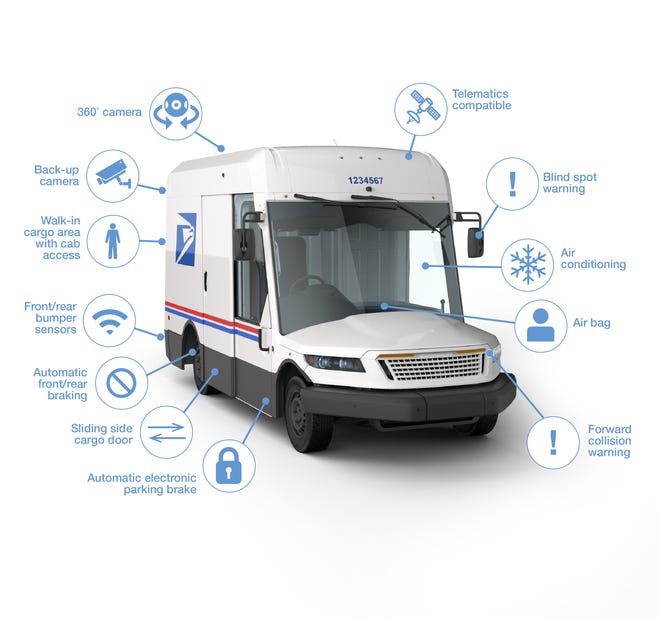
United States Postal Service Plans Electric Vehicle Delivery Fleet by 2023

Oshkosh Defense in Oshkosh, Wisconsin largely builds tactical vehicles for the US government, and in a new update, the company has been granted a 10-year contract from the United States Postal Service (USPS) for new, small-scale tactical delivery vehicles.
In a press release Tuesday, the USPS announced it has awarded a 10-year contract to Oshkosh Defense for the manufacture and delivery of its New Generation Delivery Vehicle (NGDV), which will be made to have at least fuel-efficient internal combustion engines, with many being built strictly as future-proof battery electric vehicles (BEVs).

With an initial investment of $482 million (USD), Oshkosh Defense will finalize the production design of the NGDV, assembling between 50,000 and 165,000 over the duration of the 10-year contract.
“As the American institution that binds our country together, the U.S. Postal Service can have a bright and modern future if we make investments today that position us for excellence tomorrow,” said Postmaster General and USPS Chief Executive Officer Louis DeJoy, in a statement.
“The NGDV program expands our capacity for handling more package volume and supports our carriers with cleaner and more efficient technologies, more amenities, and greater comfort and security as they deliver every day on behalf of the American people,” added DeJoy.
The look of the new USPS van has been likened on Twitter to something out of a Pixar film, with up to 165,000 of the van expected to be built and delivered over the next decade. The agency is also releasing its 10-year plan to both modernize its fleet to reduce emissions and explain how it hopes to become the US’ preferred delivery service provider, competing with private delivery corporation Amazon, which has already begun unveiling its electric delivery vans from Rivian.
The first NGDVs are expected to hit the road in 2023, replacing the 230,000 USPS vehicles currently on the road. And that’ll carry a lot of slashed emissions to come, in what will be the largest fleet modernization operation we’ve seen in history yet.

